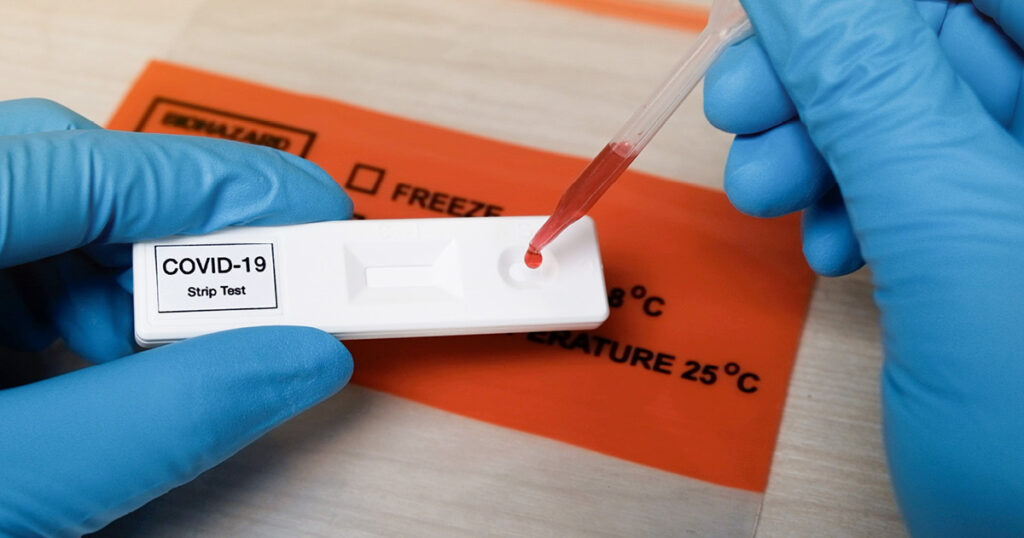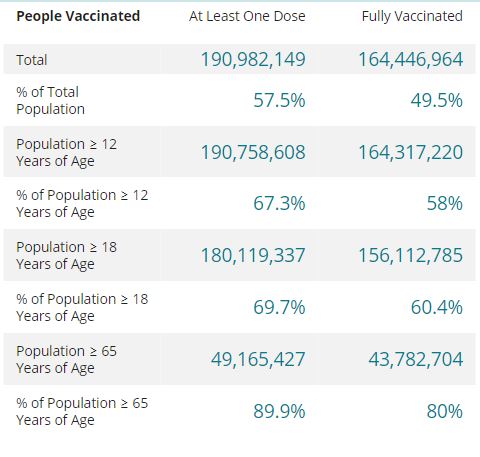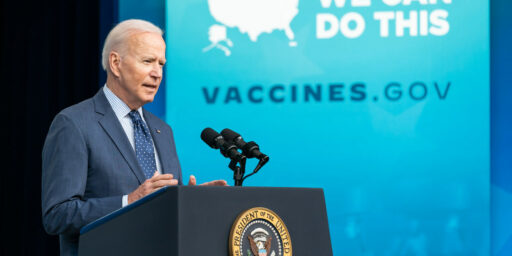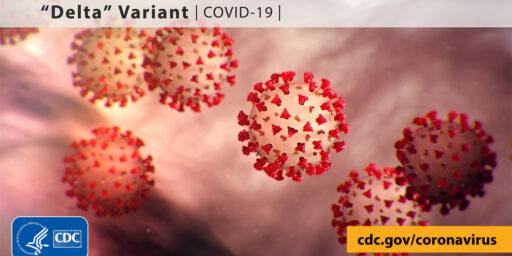COVID Breakthrough Data
Compared to what?

CNN’s headline “Less than 0.001% of fully vaccinated Americans died after a Covid-19 breakthrough case, CDC data shows” sparks more questions than it answers.
The story is much better but still uses numbers in a less-than-helpful manner.
Less than 0.004% of people fully vaccinated against Covid-19 experienced a breakthrough case resulting in hospitalization and less than 0.001% died from the disease, according to the latest data from the US Centers for Disease Control and Prevention. The data highlights what leading health experts across the country have highlighted for months: Covid-19 vaccines are very effective at preventing serious illness and death from Covid-19 and are the country’s best shot at slowing the pandemic down and avoiding further suffering.
So, aside from numbers, that’s not new news. But how do the 0.004% and 0.001% figures compared to those for unvaccinated people?
These numbers seem good:
The CDC reported 6,587 Covid-19 breakthrough cases as of July 26, including 6,239 hospitalizations and 1,263 deaths.
At that time, more than 163 million people in the United States were fully vaccinated against Covid-19.
But, again, compared to what? What are the rates for the unvaccinated?
This is useful information:
Most of the breakthrough cases — about 74% — occurred among adults 65 or older.
But, you might be asking yourself, how does this compare to the unvaccinated?
Alas, part of the problem is that we’re no longer collecting data on less serious cases:
Since May, the CDC has focused on investigating only hospitalized or fatal Covid-19 cases among people who have been fully vaccinated. The agency says the data relies on “passive and voluntary reporting” and are a “snapshot” to “help identify patterns and look for signals among vaccine breakthrough cases.”
And this messaging is confusing:
The agency shared a study this week that showed the Delta variant produced similar amounts of virus in vaccinated and unvaccinated people if they get infected. Experts continue to say that vaccination makes it less likely you’ll catch Covid-19 in the first place. But for those who do, the findings suggest they could have a similar tendency to spread it as unvaccinated people.
At least the media coverage of this is probably over-emphasizing the transmission rates and drastically under-emphasizing the radically different baselines. But it probably makes sense to do this, in that it’s seemingly in service of justifying the new guidelines, which require the vaccinated to wear masks in high-transmission localities.
The good news is that the wave of scary news on the Delta variant seems to be having positive effects:
Amid concerns over the rising cases and the dangerous strain, the country has seen a steady rise in the pace of vaccinations in the past three weeks — and an even sharper increase in states that had been lagging the most, according to a CNN analysis of CDC data. The seven-day average of new doses administered in the US is now 652,084, up 26% from three weeks ago.
The difference is even more striking in several southern states: Alabama’s seven-day average of new doses administered is more than double what it was three weeks ago. The state has the lowest rate of its total population fully vaccinated in the US, at roughly 34%.
Arkansas, with just 36% of its population fully vaccinated, has also seen its average daily rate of doses administered double in the last three weeks.
Louisiana, which had by far the most new Covid-19 cases per capita last week and has only fully vaccinated 37% of its population, saw daily vaccination rates rise 111% compared to three weeks ago.
Meanwhile, Missouri, which has been among the hardest-hit states in the latest Covid-19 surge, now has a daily average of new vaccinations 87% higher than three weeks ago.
Trying to dig into the CDC data myself, the overall numbers are a mixed bag:

That slightly less than a majority of the population is not fully vaccinated looks bad on first glance but at least 57.5% have had at least one shot; it’s unclear how many of those are one-and-done versus planning on getting the second dose. Still, half-vaxxed is more than half-protected. And the numbers are much better, still, when we look at the over-12 population, since those are the only ones eligible. That the over-12 and over-18 numbers are virtually the same is interesting but I’m not sure what to make of it. More encouragingly of al is that the over-65s are much, much more likely to be vaccinated, with almost 90% at least half-vaxxed. Since they’re far and away the most vulnerable demo, that’s good.






I expect reporters to get it wrong; math does not fit into their ‘opinions differ’ mindset. But the CDC needs to do a good job.
Here’s a question: High blood pressure is listed as a co-morbidity. Those who have it should mask. But does controlled (by medication) high blood pressure still count? The same for diabetes, also listed as a co-morbidity. If it’s controlled (again, by diet and medication) does it count?
I’ve seen this question raised, but never seen an answer.
I can’t give you the rate, because an unknown % of Americans haven’t been exposed yet. But! I can give you a lower bound!
~629,315 US Covid deaths (an undercount)
~35,745,000 Americans have tested positive for an infection
~331,449,000 Americans exist
For a first-order calculation, ignore the small number of breakouts and consider that for a year nobody was vaxxed. That gives us a minimum of 10.8% of unvaccinated people getting infected and 0.19% dying. With the real number certainly higher.
Anyone who follows baseball and has watched, listened and read as reporters have made a hash of the statistical data and analysis that has come to the game over the last 20 years shouldn’t be surprised that reporting on Covid and epidemiology in general is disjointed. It is one thing for a reporter to write on a peer reviewed medical study published in a professional journal, where the raw data is stable and has been refined, tested and the conclusions sound with any disagreeing arguments clearly presented and reporting on a fluid situation where there is little that is provable. The same failures and confusion that exist in reporting on a war or disaster are occurring in the reporting on Covid. That is why the CDC’s communications failures are so damaging to the effort to keep Covid in check.
@Sleeping Dog:
I would be extremely surprised if the CDC’s mistakes would have had a material effect.
How many vaccine refusers even know what the CDC has actually been saying?
James- We can do some rough back of the envelope numbers if you want. I am sure the actual numbers are out there but short on time this morning. The linked article notes that of those dying and being hospitalized about 99.5% are unvaccinated. Lets assume that states are roughly 50% vaccinated and unvaccinated. You would then just move those decimal points in your numbers above over a couple of places. So you are about somewhere between 100 and 200 times more likely to die or get hospitalized if unvaccinated.
I was looking at some numbers for other vaccines. For some reason people think vaccines we think of as successful must be 100% effective. In the case of polio once we went to 3 or 4 doses it is pretty close to 100% effective. However if you look at smallpox and measles vaccines they are in the 90%-97% range. We eliminated smallpox with less than 100% effective vaccine. There are multiple reasons for that including that smallpox was not that contagious and was not infectious while asymptomatic, but part of it is that we got a high percentage of people vaccinated. Measles, OTOH, is highly contagious but we only have a few hundred cases a year on average. With a less than 100% effective vaccine we have made the disease rare by getting lots of people vaccinated.
Maybe if we had continued the peak rate of vaccinations we had this spring Delta would not have become a big factor. I dont know. But now that we do have widespread delta, which is closer to measles in being so easily transmitted, the best we can hope for I think is to make it more like measles in frequency, but only if people actually get vaccinated. (This is my optimistic take. Covid also has an awful to of animals affected so we have too many reservoirs to achieve that good of an effect.)
Steve
A lot of people are blaming the CDC for a deliberate refusal by GOP governors to share data so they can pretend COVID19 isn’t out of control in their states.
I mentioned a day or two ago that Tea Party types used to accuse me of blindly trusting the government and the MSM. But I came of age politically with the government trying to draft us into a pointless war that was already obviously a lost cause. lying to us about it every day (How can you tell LBJ is lying? His mouth is moving.), and the MSM supporting them. I expect the press to be lazy, wrapped up in conventional wisdom, pro-establishment, and always trying to push conflict. I certainly don’t expect them to be numerate, or to assume a numerate audience.
This article may be using numbers in a less than clear manner, but at least those numbers are facts, and a welcome corrective to all the BREAKTHROUGH CASES, VACCINATED GET SICK headlines I’ve been seeing.
Framing effects people! Losses vs. Gains. It’s stunning how the messaging on this (from the CDC, media, etc.) is almost always backwards. It’s like Kahneman and Tversky never existed. Or toiled in obscurity.
@steve:
This x1000. This is the message framing we need!
I think we can use Bayes’ Rule to get at the number we care about.
P(die of COVID | unvaxed) = P(unvaxed | die of COVID) * P(die of COVID) / P(unvaxed)
I’ve seen published figures for each of the terms on the right.
P(unvaxed | die of COVID) is around 98% iirc — higher if you count people who died before a vaccine was available, which you probably should for this calculation
P(die of COVID) is the base rate of deaths in the population — 650k/330M or about .002
P(unvaxed) is around 40% at the moment, no?
So P(Darwin) = .98 * .002 / .4 = about half a percent for any random unvaxed person.
This is of course changing as the mix of extant variants changes. Do this calculation just for the state of Missouri using only the past 3 months of data and you’ll get a rather different number.
@CSK: In this early Chinese study, treated hypertensives had a 3% mortality vs 8% for untreated hypertensives.
https://www.webmd.com/lung/news/20200608/high-blood-pressure-doubles-coronavirus-death-risk
This article is a good summary of how hyperglycemia and diabetes contributes to Covid morbidity and mortality. So, yes, treated diabetics are still at high risk.
https://www.ncbi.nlm.nih.gov/pmc/articles/PMC8107977/
What is also very important is that obesity is also a significant co-morbidity.
Sadly, the healthcare community has been largely silent on how devastating metabolic syndrome is when it comes to Covid19, diabetes, hypertension and heart disease. Metabolic syndrome is generally defined as having 3 out of 5 of the following:
-Abdominal obesity
-High triglycerides
-Low HDL cholesterol
-High blood pressure, or on medication for high blood pressure
-High fasting glucose or on medication for diabetes
https://www.nhlbi.nih.gov/health-topics/metabolic-syndrome
Shockingly, there is a simple cure for metabolic syndrome, stop eating sugar and refined carbohydrates. I stopped eating carbs in April 2021, I’ve lost 35 pounds, and my BMI went down from 29 to 23. I’ve stopped taking two antihypertensive medications, my allergies to pollen disappeared, and my eczema cleared up.
I’m 62 and I’ve done what I can to protect myself from Covid. I had my 2 doses of vaccine. I reduced my co-morbidities by losing weight, lost the beer/wine belly and cured my hypertension. My fasting blood sugars are in the 70’s and I still wear a mask in public. Wished I had learned about metabolic syndrome in medical school.
@CSK: Type-2 and HBP patient. I’m just guessing but suspect that the reason that there’s no differentiation between controlled and uncontrolled is because the controlled component of either group is too low to project a meaningful distinction. For example, the percentage of HBP patients with uncontrolled HBP is ~65% (mine has only been controlled for about 2 years). Judging from the number of Ozempic, Trulicity, and Victoza ads I see on TV combined with the data of these medications NOT lowering A1C rates below 7.1 (which, according to my doctor, is still in the less than well-controlled range for Type-2), I’m guessing the rate of controlled diabetes is similar.
@Just nutha ignint cracker: For you and all the Type-2 Diabetics out there, here are two inspiring talks by GP’s on how they are putting many of their diabetic patients into remission by using a low carb diet.
First is Dr. Penny Figtree from Australia and is only 13 minutes long:
https://www.youtube.com/watch?v=11x9PhlZuK0&t=508s
Second is Dr. David Unwin from the UK. It’s long at 52 minutes, but might save your life and make you healthier:
https://www.youtube.com/watch?v=OlKDM3SDHPA
The CDC isn’t presenting the data in an easily digested form — to the point where it seems like they are hiding something.
We know who has gotten the vaccine, and we know who is testing positive, who is going to the hospital and who is dying — give us vaccinated, unvaccinated, and total graphs.
Some right wing states are making it hard to get that information, but excluding them won’t change the overall picture — fewer vaccinated people getting infected strongly enough to realize they should get tested, fewer vaccinated people getting hospitalized, fewer dying.
Release the data we have, call out the states that aren’t providing data so it’s clear that they are hiding something, not the CDC.
Make estimates for the states we don’t get data from. Keep a running tally of people who wouldn’t have died if they were vaccinated, by state.
@JDM: @Just nutha ignint cracker: @JDM:
Thanks. I really appreciate the info.
@Barry: As well that most (but not all of course) reporters are from an innumerate, maths avoiding background.
@JDM: My type two is under control–last A1C test was 5.1– and my capriciousness about food choice has always made low-carb diet a struggle. But thanks for the links, I’ll keep them in mind if my situation reverses.
@Just nutha ignint cracker: That’s an amazing A1C number! Congratulations, you’ve succeeded in a very difficult task.
@JDM: Well, thank you, but it’s much easier when your doctor in Korea starts treatment (because of a diagnosis of Metabolic Syndrome based on a ultrasound that found fatty liver) at an A1C level just over 6 and your stateside doctor follows suit when you return. I probably owe most of my health and longevity to having stumbled onto good practitioners.